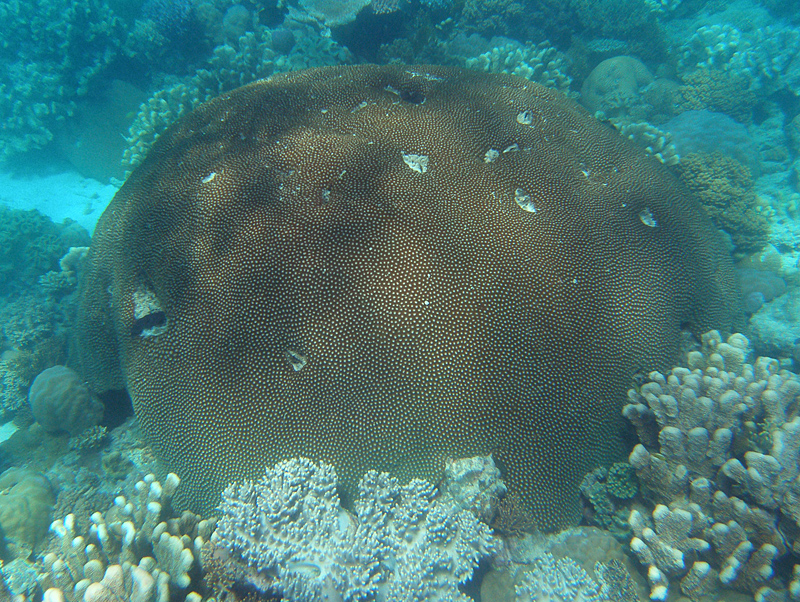Distinguishing features
A species that forms smooth massive domes up to 5m diameter. Corallites are plocoid, large, conical, thick-walled and conspicuous. Colonies are brown with paler corallite openings.
Size
- Size data has not been obtained.
Synonyms
Interesting facts
- This coral is considered a living fossil. It is a species that existed 55 million years ago before North and South America joined to separate the Atlantic and Pacific Oceans.
Distribution
Distribution and habitat preferences
Reef fronts, exposed back reef areas.
Local abundance
- Lizard Island: Can be found in most habitats around Lizard Island.
Behaviour
Diploastrea is a monospecific genus, and D. heliopora has a widespread Indo-Pacific distribution. Polyps are extended only at night, and are aggressive, hence this species usually shows little bioerosion or competion from other corals.
Colonies may reach a large size and live for several centuries, hence this species has been used to reconstruct paleoclimates and assess the effects of Crown of Thorns Starfish outbreaks.
Diploastrea heliopora is a broadcast spawning hermaphrodite, however individual polyps are either male or female.
Web resources
References
- Baird, A.H., J.R. Guest and B.L. Willis (2009). Systematic and biogeographical patterns in the reproductive biology of scleractinian corals, Annual Review of Ecology, Evolution and Systematics, 40: 551-571.
- Baird, A.H. and P.A. Marshall (2000). Bleaching of corals on the Great Barrier Reef: differential susceptibilities among taxa, Coral Reefs, 19: 155-163.
- Cameron, A.M., R. Endean and L. M. DeVantier (1991). The effects of Acanthaster planci predation on populations of two species of massive coral, Hydrobiologia, 216/217: 257-262.
- View all references





